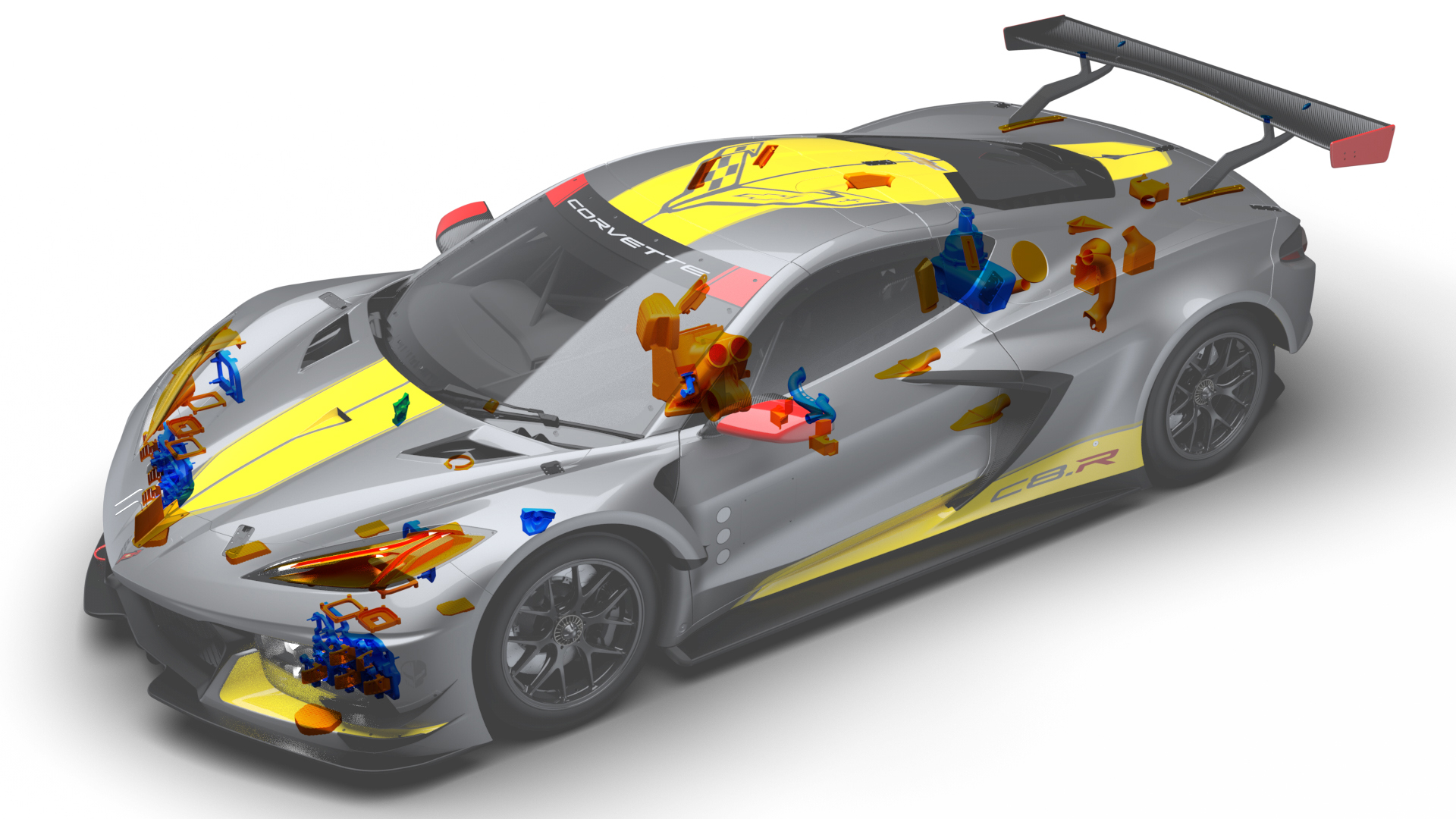3D printing has taken on an expanded role in Chevrolet Motorsports, both on- and off-road. This season, the Corvette C8.R, INDYCAR, NASCAR Camaro and Silverado race teams have accumulated more than 80,000 miles of competition in vehicles built with 3D-printed parts.
“Chevrolet has a long history of technology transfer between our motorsports and production teams, and this is a perfect example of our approach,” said Jim Campbell, GM U.S. vice president of Performance and Motorsports. “GM’s 3D-printing capability speeds up our learning cycles and, in turn, these racetrack experiences help our additive manufacturing team move one step closer to using 3D-printed parts in production vehicles.”
Two all-new mid-engine Corvette race cars – both C8.Rs – debuted at Rolex 24 at Daytona on Jan. 25, 2020, each equipped with 75 3D-printed parts, including the oil tank, tank inlet and cap, air conditioning driver cooling box and integrated hydration system, power steering pump bracket and headlight assemblies. Fifty of these parts were designed or printed in-house by GM.
Since then, the C8.Rs have accumulated nearly 8,000 miles of competition in seven races. Corvette Racing has had a successful 2020 season, taking home five first-place wins and three 1-2 finishes, including the punishing 2020 Cadillac Grand Prix of Sebring.
The INDYCAR program has also had great success leveraging 3D printing for the Chevrolet Indy V6, Chevy says. Components in the Chevrolet INDYCAR V6 exhaust system are 3D printed, which helps eliminate failure points in traditional manufactured components while increasing design freedom and reducing cost. Chevrolet INDYCAR engines have run over 60,000 miles since the season kicked off at Genesys 300 at Texas Motor Speedway in Fort Worth on June 6, 2020.
The Silverado off-road race truck debuted at the Best in the Desert Method Race Wheels Laughlin Desert Classic in October 2019. The Silverado competes in the 1200 Stock class, which limits changes to suspension, underbody and installation of race-safety equipment. As such, the Silverado has three 3D-printed parts made in-house by GM, including a rear damper shield made with carbon-fiber reinforced plastic, which protects the rear dampers from the rocky desert terrain.
Since October 2019, the Silverado race truck has accumulated 900 miles of competition in six races.
Chevrolet also switched to the Camaro ZL1 1LE for the 2020 NASCAR Cup Series, replacing the Camaro ZL1. Chevrolet engineers optimized the aerodynamic performance through extensive, full-scale wind-tunnel testing. Over 500 3D-printed prototype parts were used in testing to develop the new ZL1 1LE body. Additionally, the Camaro ZL1 1LE is equipped with a 3D-printed gear cooling duct, which has accumulated nearly 18,500 miles of competition in 27 races.
“By utilizing 3D-printed parts, Chevrolet Motorsports is demonstrating the many benefits of additive manufacturing, including manufacturing efficiencies, mass reduction, parts consolidation, creativity and cost savings,” said Audley Brown, GM director, Materials Engineering, Additive Design and Manufacturing. “3D-printed parts can offer equal strength and durability to cast or milled components, which is critical for product development and design.”
